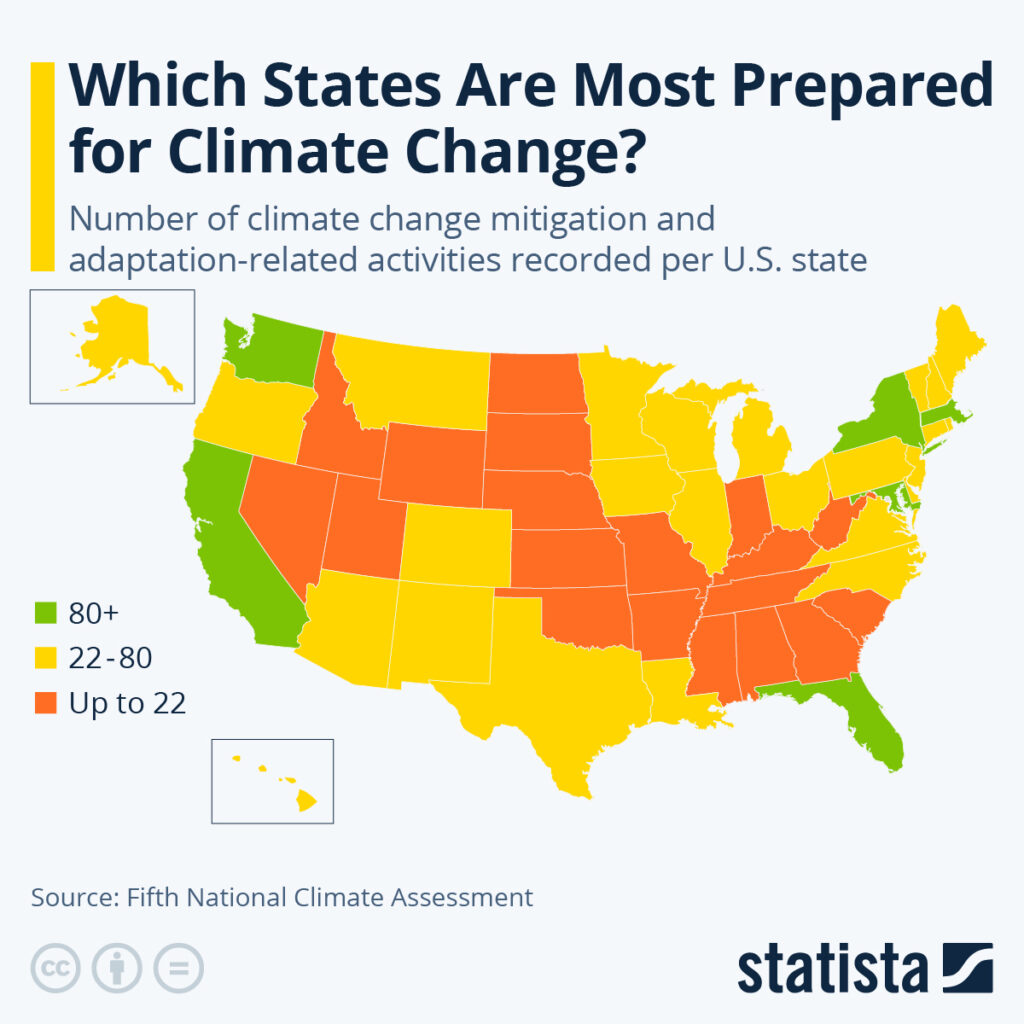The recently released Fifth National Climate Assessment finds that while U.S. CO₂ output and the price of renewable energy have fallen, the country is still expected to feel the effects of climate change now and in the future. Even if global warming was to be restricted to current levels, the country is projected to see twice as many heatwaves and 50 percent more droughts as well as increased cyclone and wildfire activity, according to the findings.
That’s why the report stresses how important it is to get ready for the impact. A count of adaptation and mitigation activities recorded in U.S. states shows the best and worst prepared for future and current climate scenarios. Coastal states in the country’s West and Northeast are the ones which have so far taken the most actions as they face additional risks from flooding and/or cyclones. Especially the coastal states in the American West carry this risk in addition to the risk of droughts, heatwaves and wildfires. However, according to the report and other sources, climate change is expected to affect the whole country. Due to its moderate climate, the Northeast actually carries fewer risks overall, while the South is raked higher for climate issues. Southern states face risks from heatwaves, inland flooding and wildfires in populated areas as well as the aforementioned coastal flooding in some places.
Nevertheless, preparedness and mitigation levels remain low in the region, for example in Mississippi, South Carolina, Georgia and Alabama. Utah and Nevada also on the list of the least prepared states despite their location in the susceptible West. Florida – which has been called the most at-risk state for climate change – is the exception and ranks among the most well prepared locales together with California, Massachusetts, Washington, New York and Maryland.
Read more at statista.com.

